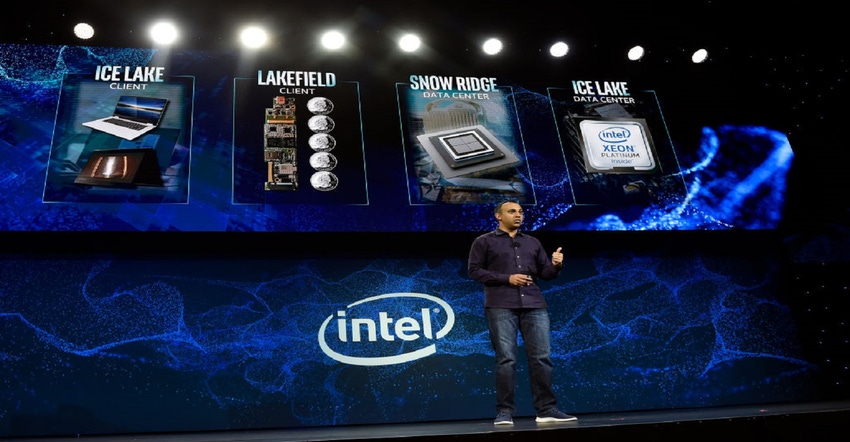Continuing poor market for PCs and servers dooms first quarter results for two of the largest semiconductor suppliers.

Intel and Samsung have for years been ranked as the two largest semiconductor suppliers by market research analysts. But fortunes for both companies have fallen in the past year, and their first-quarter results hint of continued difficult conditions in the electronics sector.
Late Thursday, Intel posted a loss of $2.8 billion, or 66 cents per share, on sales of $11.7 billion in its first quarter. While the results did fall within projected guidance, it was still a record loss, down 133% from net income on $8.1 billion, or $1.98 per share in the same quarter a year ago. This was the fifth consecutive quarter Intel has seen its sales and earnings fall.
First-quarter revenue declined year-over-year in all but one of Intel’s business unitsꟷClient Computing, Data Center and AI, Network and Edge, and Foundry Services. The one strong-performing unit was Mobileye, due to a strong automotive market.
Despite the gloomy quarter, the company slightly exceeded its conservative revenue and earnings guidance. Trying to accentuate the positive, Intel CEO Pat Gelsinger noted during an earnings call that the company is executing on its strategy to control costs and move towards an internal foundry model. He also noted that Intel continues to make progress on bringing future process nodes into production. Intel 7 is in high-volume manufacturing, and the Client Computing Group’s Meteor Lake product on Intel 4 is ramping production wafer starts for an expected launch in the second half of 2023.
As far as its troubled PC and server end markets, Gelsinger told analysts the PC market was beginning to stabilize and should be in better shape by mid-year. He added that near-term market conditions remain uncertain in servers but will pick up in the second half of the year.
For the second quarter, Intel expects to post a GAAP loss of 62 cents per share, with revenue ranging from $11.5 to $12.5 billion. Projected gross margin is 33.2%. All the projections are well below second-quarter results from a year ago.
Bad Quarter for Samsung Too
The first quarter was no kinder to Samsung. The Korean electronics company posted a first quarter profit of $478.5 million, way down from $10.7 billion in the same quarter a year ago. Poor memory sales were a culprit, with the company’s memory division posting a $3.4 billion loss compared to a $6.3 billion profit a year ago. Samsung recently announced it would cut memory production due to an inventory glut in memory.
In its earnings statement, Samsung said it expects only limited recovery demand, but projects a strengthening of the memory market in the second half of 2023, as the launch of new CPUs for servers and AI will trigger stronger demand for DDR5 memory. The NAND memory market should also improve, as Samsung’s Memory Business looks to expand the supply of cutting-edge nodes such as V7 and V8.
Samsung’s first-quarter results were also impacted by a quarter-to-quarter decline in its mobile display business, as well as continuing weak demand in its large display panel business.
While the electronics industry as a whole has seen its fortunes tumble in recent months, Intel and Samsung have been particularly vulnerable because a lot of their business lies in sectors that have declined the mostꟷPCs and servers. With the COVID-19 pandemic largely behind us, PC sales have fallen dramatically as consumers are no longer buying machines for remote work. At the same time, corporate businesses, even those who’ve ordered workers back to the office, are not laying out significant capital expenditures to upgrade their equipment. Recent inflationary pressures have also contributed to putting a lid on spending by both consumers and businesses.
How much the poor first-quarter earnings for the top two semiconductor suppliers will have a ripple effect on other companies remains to be seen. For instance, a number of electronics companies have continued to perform relatively well because they serve sectors that remain in high demand, such as automotive. However, these companies also projected the electronics market to soften into the first half of 2023 due to recessionary pressures.
Spencer Chin is a Senior Editor for Design News covering the electronics beat. He has many years of experience covering developments in components, semiconductors, subsystems, power, and other facets of electronics from both a business/supply-chain and technology perspective. He can be reached at [email protected].
About the Author(s)
You May Also Like





